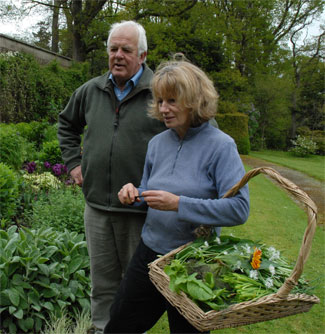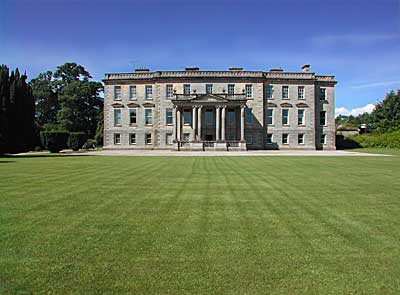Insider View on Opening a Restaurant
 This month our intrepid thinker Lucy Madden considers the irresisistible force that so often lures the wrong people into opening a restaurant - and gives some excellent examples of the good and the bad
This month our intrepid thinker Lucy Madden considers the irresisistible force that so often lures the wrong people into opening a restaurant - and gives some excellent examples of the good and the bad
It is said that there are three things we all think that, given a chance, we could do well. I forget two of them but one, I know, is to run a restaurant. For myself, I know I could be a superb photographer or ballet dancer, given a good camera and some dancing lessons, but this is beside the point.
As for running a restaurant, a couple of years ago a friend of ours was unfortunate in not resisting his inclination in this direction. He knew how to do it, he insisted, in spite of having no experience that might assist him in his endeavour apart from a love of good food.
He rented a premises in the main street of a busy town and hired an interior decorator to turn the place into a state of the art setting, hired a young chef and constructed a menu that was an exercise in box ticking; fresh ingredients, the promise of local food, some fusion influences, traditional Irish dishes with a modern twist. You get the picture. Mistake number one was the launch where the food on offer was sushi. Hardly a showcase for local produce. Within two years the restaurant closed and the premises remain empty to this day.
It’s hard to be precise in pin-pointing what went wrong when much seemed so right. But had our friend taken a walk around the corner of his trendy eatery he would have seen a very thriving little business where getting a table means booking well in advance.
The décor here is drab, the tables too close together but the food, which is Greek Turkish, is fresh and authentic and above all, reasonably priced. There is no chef ‘showing off’ in the kitchen dabbing spots and swirls on to plates, and no feeling of condescension from the staff that you can experience in certain restaurants.
Our friend had never crossed the threshold of this place and this was his first mistake since seeing what, and what does not, succeed as an enterprise should be part of the market research. Success or failure may depend on one aspect overlooked. Years ago I went to the launch of a restaurant in London and a fellow guest turned to me and whispered: “The lighting here is far too bright. It makes us all look like phantoms. No-one will want to come here.” And they didn’t and soon another restaurant put up the Shut sign.
Growing up in the 1950s, as I did, restaurants as we know them scarcely existed. I remember the excitement of being taken to a café to eat beans on toast. Hotel dining rooms were the option for those who wanted to eat out and the experience was so dismal that it was undertaken out of necessity only.
It was not until the 1960s that we began to think of food as pleasurable, and the following decades have seen an explosion of gastronomic venues. Today eating out has been described as ‘the new shopping’ but this is to describe the term loosely to include amateurs cooking in sheds on cliff tops, pop-ups in the suburbs, and a proliferation of take-aways.
In spite of the excellence of the few, the mystery remains as to how some terrible restaurants remain in business and, with the certainty of offending an entire population, my experience is that the further north you go in this country, the more likely you are to encounter bad food. My worst culinary catastrophes have mostly been encountered north of the border, in places that admittedly sit alongside restaurants of excellence, but the wonder is that they can co-exist.
Horses for courses, one might exclaim, and if you are not paying much you can’t expect much in the way of quality, but very often bad food is also expensive. Why do we put up with it? Variously I have encountered cinnamon sprinkled thickly over a salad, a rice pudding that made an appearance as a pile of long-grain rice, a Caesar salad with no dressing.
Even at the Titanic Centre, where they should know better, the ‘spiced soup’ was so salty my companions could not eat it and the bread was stale. None of these experiences were cheap and even that would not have excused the crassness of the experience.
To anyone thinking of opening a restaurant I would say, do a lot of market research. A good place to begin would be the Eastern Seaboard in Drogheda. It starts with many disadvantages; it is hard to locate, situated on the edge of an unattractive housing estate and you could walk past it many times without a second glance.
When it opened a few years ago I read a review of it that was so enthusiastic I thought it must have been written by a relative. Today it is a favourite destination of mine and many other people. That it should thrive in such an unlikely location is a testament to that elusive skill, the art of making people happy.
 Together with her husband Johnny & family, Lucy Madden runs their magnificent 18th century mansion, Hilton Park, Clones, Co Monaghan as a country house which is open to private guests, groups, small weddings and conferences. The restored formal gardens are also open by arrangement. Lucy is a keen organic gardener and also a member of the Irish Food Writers Guild.
Together with her husband Johnny & family, Lucy Madden runs their magnificent 18th century mansion, Hilton Park, Clones, Co Monaghan as a country house which is open to private guests, groups, small weddings and conferences. The restored formal gardens are also open by arrangement. Lucy is a keen organic gardener and also a member of the Irish Food Writers Guild.





There are currently no comments
Leave a comment
Not a member? Register for your free membership now!
Or leave a comment by logging in with: